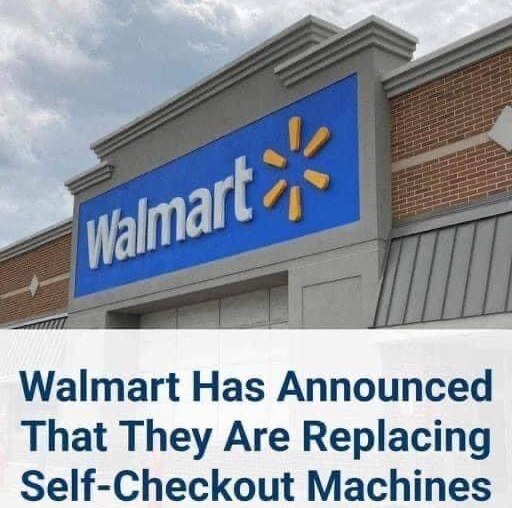Walmart, the largest retailer in the United States, has announced a dramatic change in its checkout strategy after years of testing and expanding self-checkout systems. What was once praised as the future of shopping convenience has instead become one of the company’s biggest customer service blunders. Now, Walmart is pulling back from automated lanes and “Scan and Go” technology, shifting its focus back to the human touch that many shoppers say they’ve been missing.
When Walmart first rolled out self-checkout machines nationwide, the move was billed as a win-win. Customers were promised shorter lines and faster checkouts, while the company would benefit from reduced labor costs. At the same time, the retailer pushed its “Scan and Go” feature, letting shoppers scan items with their phones and pay digitally before leaving. On paper, the system looked modern, sleek, and efficient.
But reality told another story. Many customers quickly became frustrated. Instead of saving time, the machines often caused more headaches. Shoppers found themselves troubleshooting frozen screens, re-scanning items, or waiting for staff to clear errors—tasks cashiers used to handle with ease. For older shoppers and those less comfortable with smartphones, the process was even more alienating.
“Scan and Go” fared no better. While it sounded futuristic, in practice it forced shoppers to juggle their phones, carts, and groceries while meticulously scanning barcodes. For many, it felt like doing a cashier’s job without any real benefit, especially when a staffed register could handle everything in minutes.
Walmart has now admitted that the experiment didn’t live up to expectations. Instead of improving satisfaction, it highlighted a basic truth: retail isn’t only about efficiency—it’s about human connection. Shopping may be transactional, but the interactions customers have with employees are key to how they feel about the brand. Removing that left many feeling overlooked and undervalued.
So the company is pivoting. Walmart says it will scale back self-checkout in many locations and invest in hiring and training more cashiers. The aim is to bring back the personal, reliable service customers consistently say they want. Internal research shows a large share of shoppers prefer interacting with a cashier—not only for convenience, but for the reassurance that any issues will be handled on the spot.
The move also reflects a broader lesson for the retail industry. Across the country, chains have experimented with automation to cut labor costs, from grocery stores to fast-food restaurants. Yet customer response has been mixed. Some enjoy the independence of self-checkout, but many others find it frustrating and impersonal, especially when systems malfunction or when buying large orders.
By reversing course, Walmart is sending a clear message: listening to customers matters more than chasing automation at all costs. Convenience doesn’t always mean fewer employees or more machines—it often means ensuring shopping feels smooth, welcoming, and stress-free.
For parents balancing kids, elderly shoppers, or those who simply prefer a friendly face, this shift is a welcome change. It suggests Walmart is ready to value human service as much as efficiency.
That doesn’t mean the company is abandoning technology altogether. Digital tools like mobile payments and apps will remain, but with a more balanced approach where staffed registers play a central role once again.
Other retailers are watching closely. If Walmart’s shift boosts satisfaction and loyalty, it could inspire an industry-wide rethinking of automation.
Ultimately, this decision is about more than checkout lanes. It’s about acknowledging that shopping is still a human experience. People want to feel supported—not just processed by machines. By restoring cashiers to the front lines, Walmart is betting that personal interaction isn’t a relic of the past, but a vital ingredient in building long-term customer trust.
As the changes roll out in the coming months, shoppers will be watching to see if Walmart delivers on its promise. If successful, this could prove to be one of the company’s smartest moves in years—an admission that while technology can enhance shopping, it can never replace the value of human connection.
